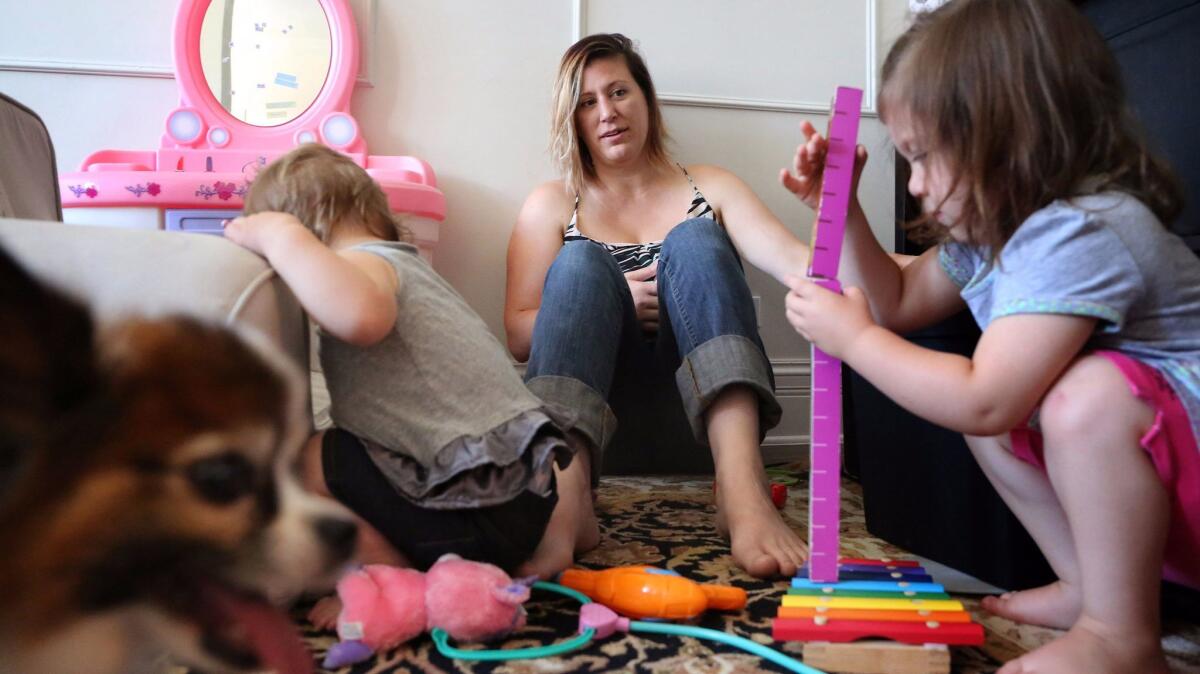The days of stay-at-home moms are ‘long gone,’ report finds

- Share via
The days of stay-at-home mothers are behind us, says a new report from the Center for American Progress, which analyzed national labor data and found that, across the country, the share of moms who financially support their families continues to grow.
Nearly two-thirds of American moms these days (64.4%) are breadwinners, the researchers found. That’s a hop from 63.3% in 2012, the year of the last analysis, and a leap from 1970, when roughly a quarter could claim the title.
“Long gone are the days when the majority of middle- and upper-income women stayed home to raise families full time,” the authors wrote. “Instead, in most families, either both parents work or the household is headed by a single parent.”
Forty-two percent of mothers in the United States solely or mostly pull the wagon, while 22.4% bring home at least a quarter of household earnings.
Many women still opt out of employment after having children. Sometimes, however, the soaring cost of child care or a lack of paid maternity leave is what knocks them out of the workforce.
Much of the time, mothers work because they must. One middle-class income no longer can support most households, and culture has shifted away from the rigid gender roles of generations past. But public policy hasn’t caught up, argues Sarah Jane Glynn, senior policy advisor at the Center for American Progress, a left-leaning think tank in the nation’s capital.
“The fact that women are bringing home a significant portion of their families’ incomes does not mean that there is gender parity in the workforce, nor does it mean that working parents and caregivers have the supports they so vitally need,” she wrote. “A lack of policies such as universal paid family and medical leave, paid sick days and workplace flexibility still hold women back from reaching their full economic potential.”
Glynn meant that, for example, an employer can withhold a day of pay if a worker misses a shift to take care of a sick baby. Because women shoulder a disproportionate amount of domestic responsibilities, this kind of lost earnings more strongly hits them.
Meanwhile, as the United States is the world’s only advanced economy that does not guarantee any paid parental leave, income interruptions frequently follow the birth of a child. (Roughly 43 million American workers have no paid sick leave or parental leave, according to the White House.)
The economic blow is harsher for mothers of color, whose families are more likely to depend on them for income than white mothers’ families are. Seventy-one percent of black mothers and 41% of Latino mothers were primary or sole breadwinners in 2015, the most recent data available, compared with 37% of white mothers, the Center for American Progress paper shows.
During the campaign, both major parties’ presidential candidates pledged to make life easier for working mothers. President-elect Donald Trump was the first Republican contender to release policy plans on paid maternity leave and cheaper child care. (He has not said whether he will prioritize these efforts during his first months in office.)
Trump has proposed allowing parents to deduct the average cost of child care in their area from their taxes and creating a national maternity leave program, which, his team said, would pay birth mothers an average of $300 in weekly benefits for up to six weeks.
Proponents have called the measures a step in the right direction, considering that no existing national policies provide concentrated support for Americans who juggle both work and children. Detractors, however, say singling mothers out in the law could hurt their workforce progress.
“You’re going to create a scenario where employers have even more incentive to view workers differently, whether it’s conscious or not, and lead to discrimination of women of childbearing age,” said Glynn, who supports implementing a leave program for both mothers and fathers. “It also contributes to the idea that it’s a woman’s job to take care of a baby, while dads are just sperm donors. But fathers of young kids are often desperate for more time with them.”
Paquette writes for the Washington Post.
ALSO:
Uber pulls its self-driving cars off the streets of San Francisco
Stone tests the appetite for American craft beers in the land of Oktoberfest
Why it’s so hard to get your hands on the toy your kid really wants for Christmas
More to Read
Inside the business of entertainment
The Wide Shot brings you news, analysis and insights on everything from streaming wars to production — and what it all means for the future.
You may occasionally receive promotional content from the Los Angeles Times.










